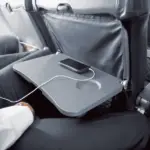The controversial booking strategy dividing travelers and flight etiquette experts
Air travel has always had its share of unspoken rules and strategic maneuvers, but a contentious booking practice is causing increasing friction between passengers and raising questions about travel etiquette in cramped cabin spaces.

The tactic has become widespread: couples or travel companions deliberately book the window and aisle seats, purposely leaving the middle seat empty in hopes that no one selects it—essentially gambling on gaining a full row for themselves at no extra cost. It’s a calculated move that’s sparked heated debate among frequent flyers, travel experts, and airline staff.
The Anatomy of the Window-Aisle Strategy
For anyone who flies with any regularity, the middle seat is widely regarded as the least desirable option. Sandwiched between two strangers with no direct access to either the aisle or window, it’s the aviation equivalent of drawing the short straw. This universal disdain has given rise to the controversial booking technique that’s now causing turbulence in the friendly skies.
The strategy unfolds like this: travel companions book only the window and aisle seats in a three-seat row, deliberately skipping the middle position. The calculation is straightforward—since most travelers avoid middle seats whenever possible, the spot may remain vacant, giving the pair extra space to spread out. In the event someone does get assigned that middle seat, the couple can simply ask to switch so they can sit together.
While this might seem like innocent travel savvy to some, others see it as a manipulative practice that creates awkward social dynamics and puts solo travelers in uncomfortable positions.
When the Gamble Doesn’t Pay Off
For every successful execution of this strategy, there are numerous instances where the plan backfires. Modern flights are increasingly packed to capacity, making completely empty seats increasingly rare. When a solo traveler inevitably gets assigned or selects that middle seat, the situation can turn uncomfortable quickly.
The scenario typically unfolds in a predictable pattern. A solo traveler arrives at their assigned middle seat only to find a couple or companions occupying the window and aisle positions. Immediate disappointment from the pair is often palpable.
Many solo travelers report feeling manipulated in these situations. The implicit social pressure to accommodate seems reasonable on the surface—who wouldn’t want to help a couple sit together? However, this framing obscures the fact that the situation was deliberately engineered by the couple’s booking strategy. The solo traveler, who simply booked or was assigned their seat through standard channels, suddenly becomes cast as the potential obstacle to someone else’s comfort.
Flight attendants observe these uncomfortable exchanges with increasing frequency. These interactions often occur during the already hectic boarding process, adding another layer of tension before the flight even departs. Crew members frequently find themselves mediating these delicate social situations while managing their numerous other pre-flight responsibilities.
The Psychology Behind the Strategy
The popularity of this booking approach speaks to the psychology of air travel and our collective desire to maximize comfort in increasingly cramped conditions. Airlines have steadily reduced seat sizes while introducing premium economy and comfort options at additional costs, effectively monetizing the basic human desire for adequate personal space.
This phenomenon represents a creative consumer response to what many perceive as unreasonable pricing for basic comfort. When airlines charge substantial premiums for guaranteed adjacent seating, some travelers feel justified in finding workarounds. The window-aisle strategy emerges from this context—a tactical maneuver in the ongoing negotiation between passenger expectations and airline profit models.
This sentiment permeates travel forums and social media discussions where defenders of the practice express frustration with an industry they view as increasingly exploitative. With airlines overbooking flights, charging for formerly included amenities like baggage, and continually reducing legroom, many passengers feel entitled to use whatever legitimate strategies they can to improve their travel experience.
However, critics emphasize an important distinction: this strategy doesn’t actually outwit the airline—it potentially inconveniences fellow passengers who had no role in creating the pricing structures that prompted the behavior in the first place.
The Solo Traveler’s Perspective
Solo travelers often bear the brunt of this strategy. Many report feeling pressured to accommodate seat switch requests even when it reduces their own comfort. The social pressure to appear accommodating can be difficult to resist, especially when surrounded by onlooking passengers eager to get settled.
The experience highlights an awkward social dynamic these situations create. The frustration stems from how the situation was deliberately engineered by the couple’s booking decisions, yet the framing often makes the solo traveler appear difficult if they decline to switch. It becomes a form of social engineering that places the burden of accommodation on someone who had no part in creating the situation.
Travel etiquette experts suggest that travelers should never feel obligated to accept a seat change that reduces their comfort. It’s perfectly acceptable to politely decline if the new seat doesn’t meet one’s needs. The person requesting the change should always offer an equal or better seat position, not a downgrade in terms of personal preference or comfort.
Travel etiquette experts suggest that travelers should never feel obligated to accept a seat change that reduces their comfort. “If someone asks you to switch seats, it’s perfectly acceptable to politely decline if the new seat doesn’t meet your needs,” advises an etiquette consultant. “The person requesting the change should always offer an equal or better seat position.”
The Flight Attendant’s Burden
The growing popularity of this booking hack has created additional challenges for cabin crew, who often find themselves mediating uncomfortable standoffs between passengers.
Flight attendants already manage boarding, safety checks, luggage issues, and tight turnaround times during the boarding process. Having to referee seating disputes adds another layer of stress to an already demanding job, particularly when passengers become insistent or emotional about their seating arrangements.
Airlines typically train crew members to help facilitate reasonable seat switches when possible, but they generally support a passenger’s right to remain in their assigned seat. Cabin crew can request but never require a passenger to change seats. Ultimately, the seat number on a boarding pass is the seat each passenger is entitled to occupy.
Some airlines have started addressing this issue directly in their pre-flight communications, reminding passengers that seat switches are voluntary and should not be expected. Others have adjusted their seating algorithms to reduce the likelihood of leaving middle seats as the last available options.
The Ethics Question
Beyond matters of convenience and comfort, the window-aisle strategy raises interesting questions about travel ethics and social responsibility. Is it acceptable to create a situation that potentially inconveniences others for your own benefit?
This practice represents part of a broader trend in increasingly cramped public spaces, where behaviors that prioritize individual advantage over collective comfort have become more common. The seat hack represents a small but telling example of how we navigate shared spaces when resources—in this case, comfortable seating—are limited.
The real problem lies not necessarily with individual passengers but with an industry that has made comfort a premium feature rather than a standard offering. When basic comfort becomes a luxury good, passengers will inevitably develop workarounds. The central ethical question becomes whether those workarounds should come at the expense of fellow travelers rather than the airlines establishing the policies.
Alternative Approaches
For those who want to maximize their comfort without potentially inconveniencing others, travel experts suggest several alternatives to the controversial window-aisle strategy.
The simplest solution for those who prioritize sitting together is to pay for seat selection. Many airlines offer this service for a relatively modest fee compared to the total cost of international travel. While this approach concedes to the airline pricing model that many find frustrating, it eliminates the potential social awkwardness and ensures the desired seating arrangement.
For budget-conscious travelers, booking with airlines that still offer free seat selection presents another option. Alternatively, checking in exactly when the check-in window opens often provides the best selection of remaining seats without additional fees.
Another emerging strategy involves couples booking aisle seats across from each other rather than in the same row. While not sitting directly adjacent, this arrangement allows for easy communication across the aisle while giving both travelers their preferred seat type. This approach satisfies the desire for proximity without creating potentially uncomfortable situations for third parties.
Those prioritizing extra space might consider focusing on flight timing instead of seating tricks. Early morning flights and mid-week departures typically operate with lighter passenger loads. Travelers are more likely to end up with extra space naturally on these flights than by attempting the window-aisle gambit on a packed weekend route.
The Future of Flight Comfort
The tensions between passenger comfort, airline revenue, and social dynamics in the cabin are unlikely to disappear. Some industry experts predict that seat selection will become increasingly sophisticated, with more personalized options and pricing tiers.
The unbundling of the traditional air travel experience continues to advance rapidly. In the coming years, we’ll likely see more granular control over exact seating environments, but always with premium pricing attached. The ability to guarantee empty adjacent seats may eventually become a standardized option, priced somewhere between a single seat and two full fares.
Others believe the solution may lie in aircraft design rather than booking policies. Several manufacturers are exploring alternative seating configurations that could make middle seats less undesirable or eliminate the traditional row structure entirely. These design innovations could potentially resolve the underlying issues that make the window-aisle strategy attractive in the first place.
In the meantime, travelers continue to navigate the unwritten rules of the skies, balancing personal comfort against consideration for fellow passengers in increasingly cramped quarters.
Finding Common Ground
The debate around this controversial seating strategy highlights the tensions inherent in modern air travel—a mode of transportation that forces strangers into intimate proximity for hours on end.
Etiquette experts suggest approaching these situations with empathy on all sides. Couples using this strategy should be prepared for someone to occupy that middle seat and avoid making them feel guilty about it. Solo travelers caught in the middle should remember that politely declining a disadvantageous seat switch remains perfectly acceptable.
For now, the window-aisle strategy remains a divisive practice in the travel community—seen either as clever hack or selfish maneuver depending on which seat you occupy. As flights continue to operate at near capacity and personal space becomes an increasingly precious commodity in the skies, these social negotiations will remain an inevitable part of the air travel experience.
Perhaps the most constructive approach involves acknowledging a fundamental truth about air travel: we’re all just trying to make a fundamentally uncomfortable experience a little more bearable. A little kindness and understanding on all sides goes a long way at 35,000 feet.
Whether this controversial booking strategy represents resourceful travel planning or inconsiderate behavior may ultimately depend on perspective—and your preferred seat on an airplane. But one thing remains clear: in the confined space of an aircraft cabin, our choices inevitably affect those around us, making courtesy and communication essential companions on any journey.




